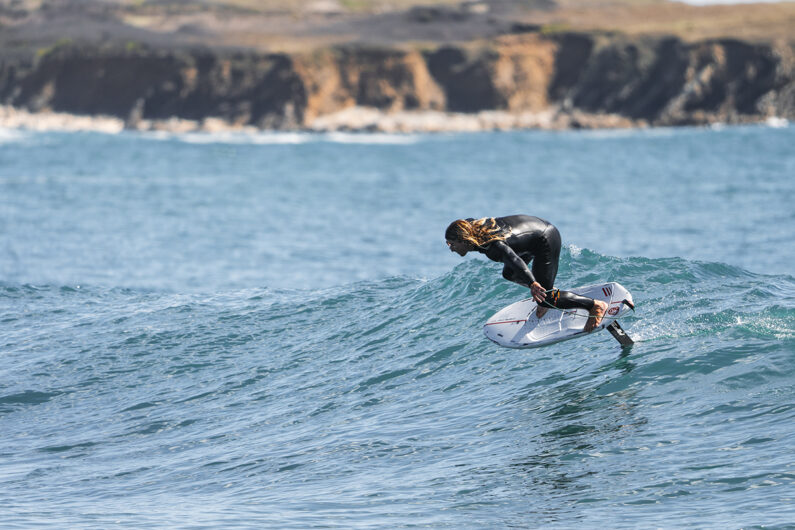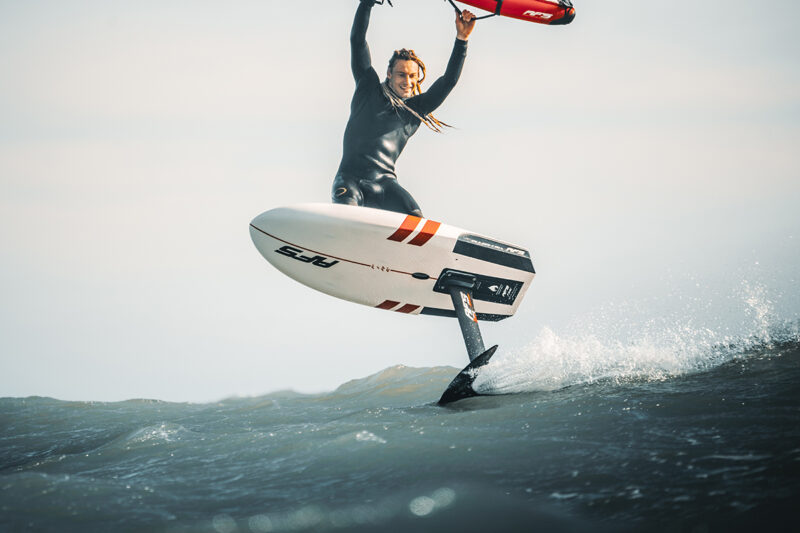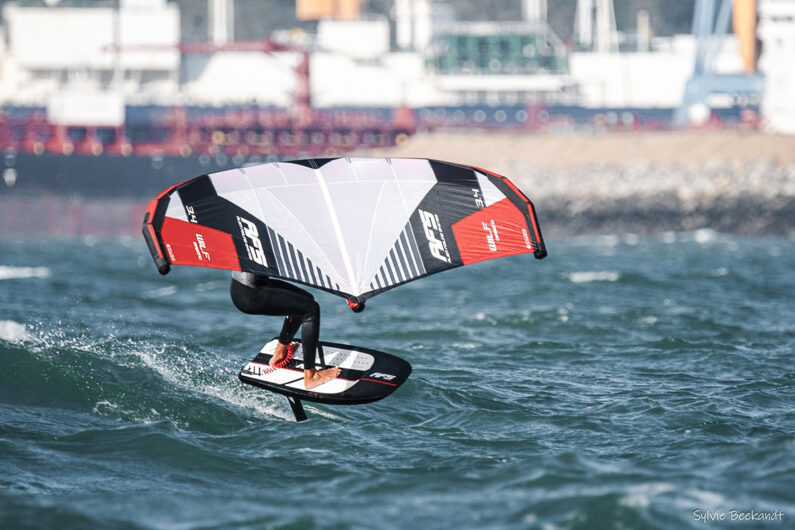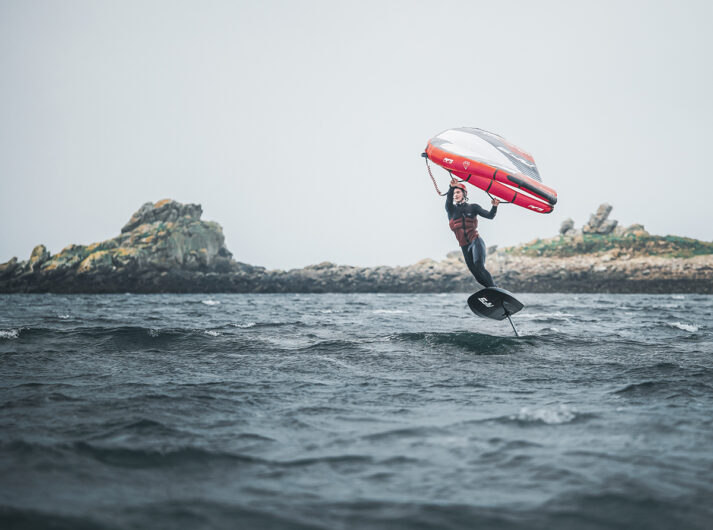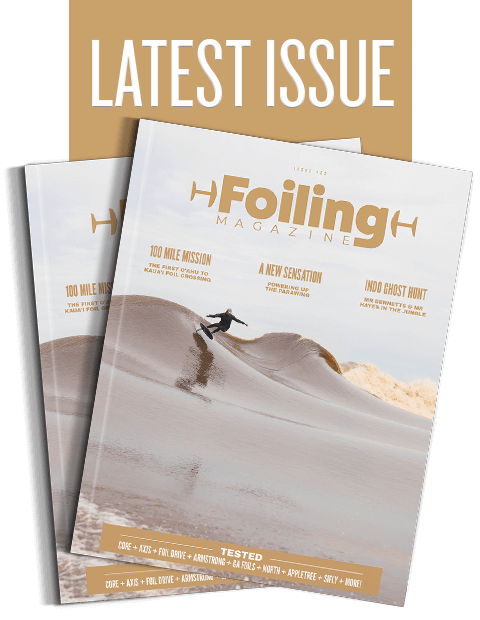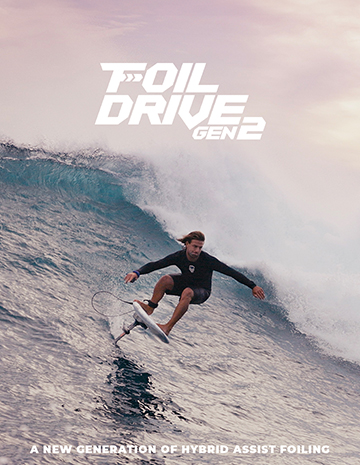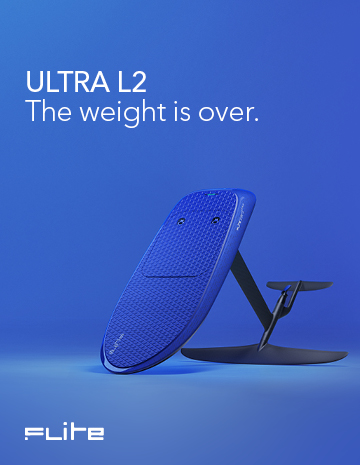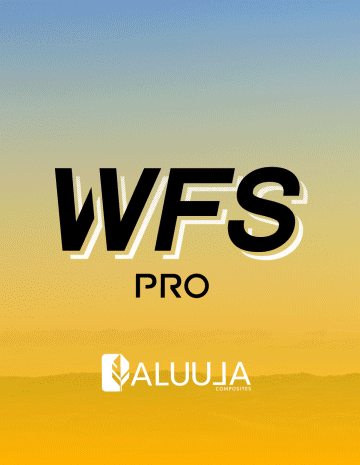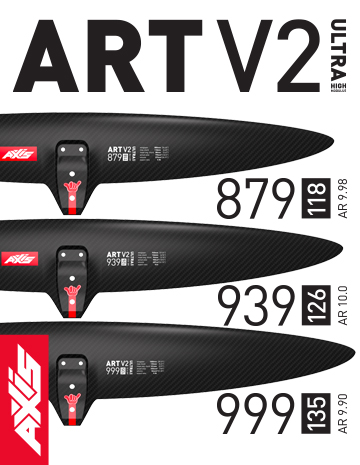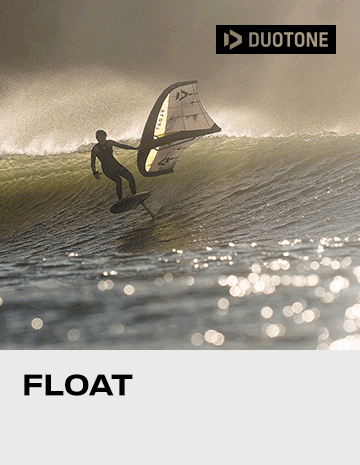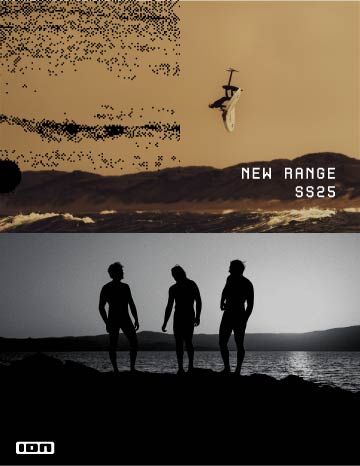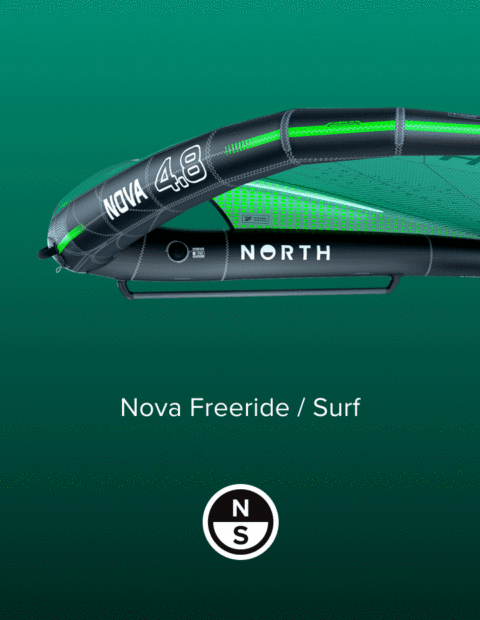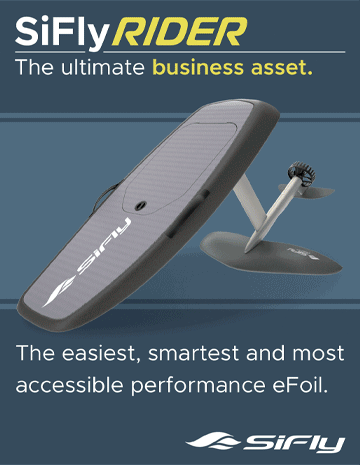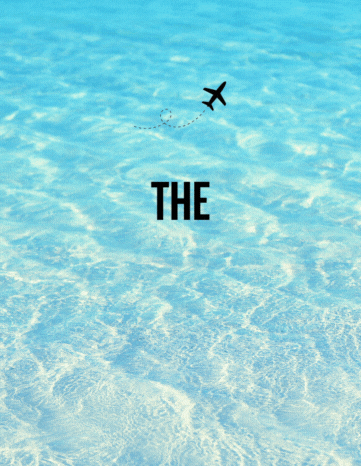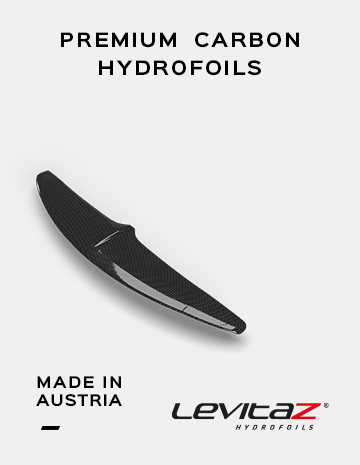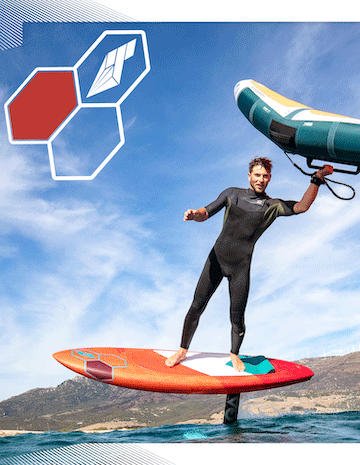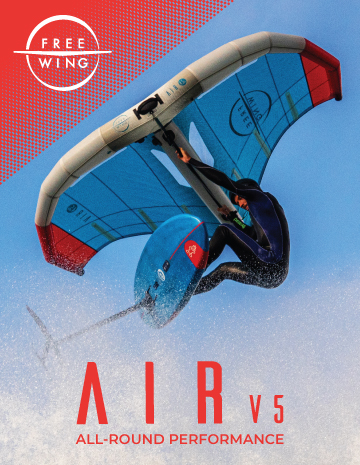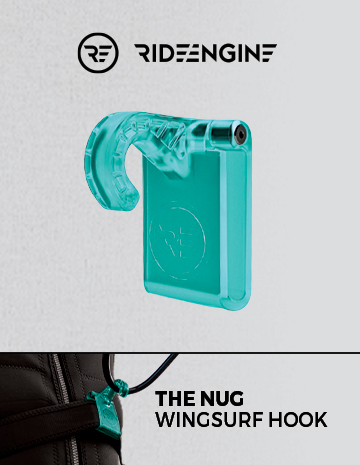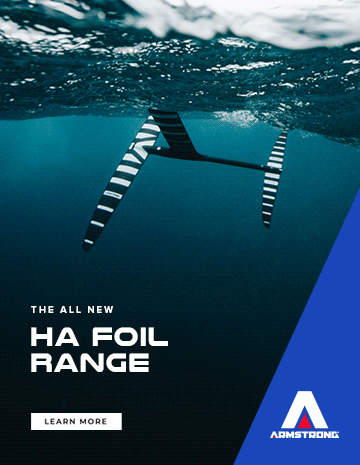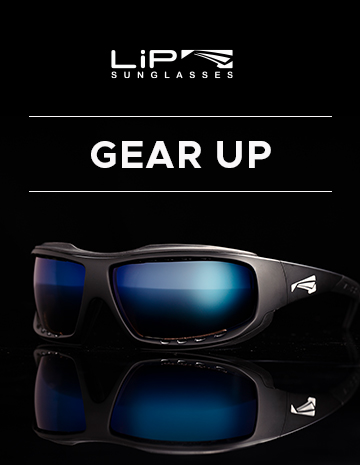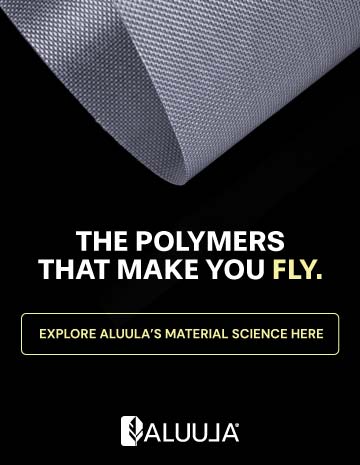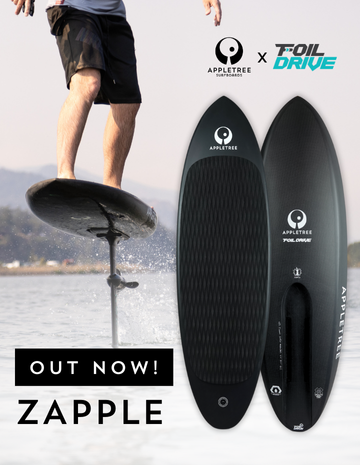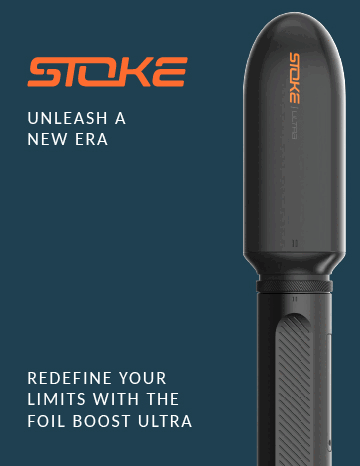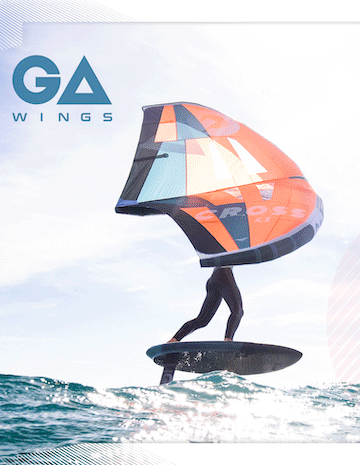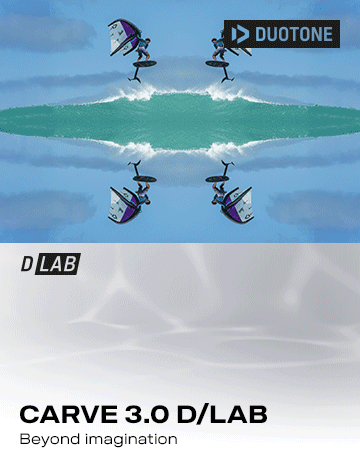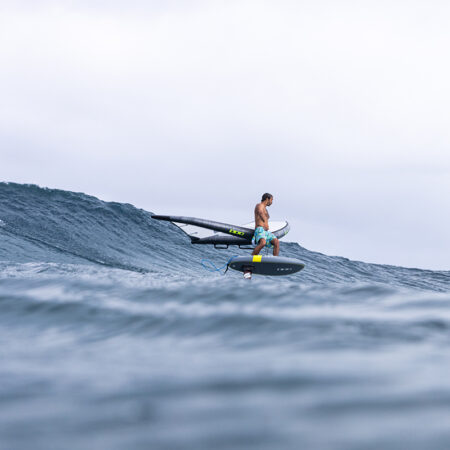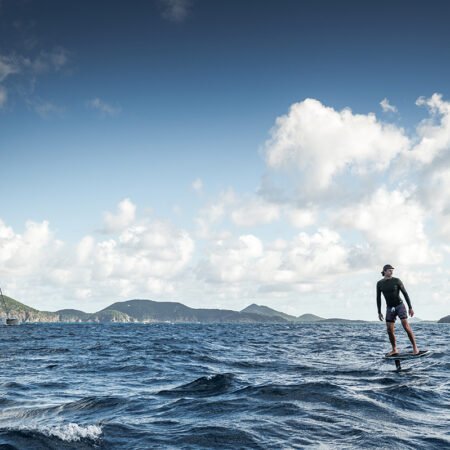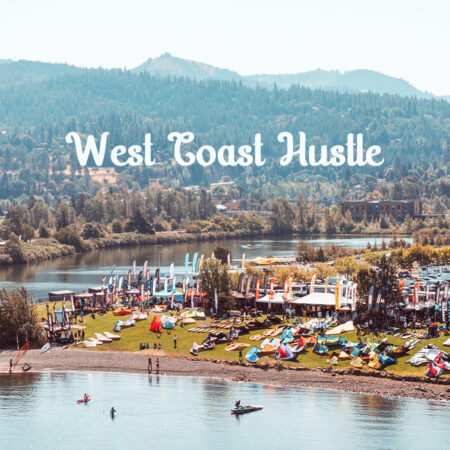INBOUND: AFS EVO Range
A new mid-aspect and highly versatile foil range from the team at AFS, whose DNA traces back not just to previous AFS foil developments, but also to a legend of the sport too…
First up, tell us about the EVO and which disciplines it’s built for…
The EVO range is a line of foils that we wanted to be extremely versatile and highly adaptable. The wide range of wing sizes (from 950 to 1650) allows for evolution in all conditions, whether it's for flat water cruising, jumps, surfing, or downwind. We made sure that the usage range of our foils is as wide as possible to ensure great accessibility and performance.
These foils are adaptable because of their ability to gain in performance depending on the combination of equipment you choose to use, which is the strength of the EVO range. It has proven itself on all types of water and in all practices, be it freeride, freestyle, freerace, surf, or downwind. You can start with larger surface areas, but if you pair the wing with a mast or a stabilizer more oriented towards performance to enhance the sensation, the wing will follow. Our goal was that if you buy a foil from the EVO range, you will never be limited in performance throughout your progression.
How long has the EVO range been in development?
As we mentioned, this new EVO range is the replacement for the Performer range. When we conceived this range, we wanted at all costs to make the foils even more enjoyable. To achieve this, we were inspired by the range that most closely matched this goal and sought to enhance the glide sensations even on accessible foils, as one can have delightful sensations without necessarily going for speed. As an example, the EVO 950 wing didn’t require many prototypes because it directly evolved from the PURE 900 V1 but we increased the surface area to achieve a new level of accessibility while maintaining performance. The feedback during testing quickly became extremely positive because the level of sensation is very interesting compared to their level of accessibility. This is what we sought to provide with these foils. This is very representative of what we do at Foil and Co: agile development through continuous evolution.
For the other wings in the range, we tested different types of profiles but had to backtrack to develop something different because we weren't satisfied. Even so, the development only took a few months. The EVO range required about ten prototypes in total, and at the same time, we were also developing an adapted fuselage and stabilizers. There was a lot of work. The desire to develop a new, highly adaptable range on a new fuselage and mast base emerged in October 2023 and by March 2024 it was launched and sold to the public. This is the advantage that the “Made in France” production offers us – responsiveness to push the limits of innovation.
Is it safe to say it sits in the mid aspect category? What are the figures and does this change with the individual sizing?
Indeed, this range has a highly adaptable moderate aspect ratio, making it very versatile and allowing it to deliver a wide range of performance. The mid-aspect ratio is between 7.5 and 8.1, and the wing sizes range from 950 to 1650, allowing for easy evolution in all conditions, whether for flat water cruising, jumps, surfing, or downwind. We ensured that the usage range of our foils is as extensive as possible. We wanted to develop a range of compact wings. For the 950, which is the smallest size, we could afford to increase the aspect ratio a bit to boost low-end performance. And for the wings from 1650 to 1250, this medium aspect ratio indeed allows for versatility. This EVO range is meant to be progressive both in size and in practice.
You’ve got a new connection system between the fuse and the foil. What’s the thinking behind this and where do the benefits lie?
The FuseLink is a highly sophisticated conical assembly for the connection between the mast and the fuselage. This results in a thinner fuselage and mast profile, increasing rigidity and reducing drag, thus maximizing glide. We chose this technology, which is widely proven by the fastest foils in the world of kitefoiling, because it is the most optimal connection. We then adapted this concept to our needs and our technology. It’s a real game changer: it offers impeccable hydrodynamic glide and rigidity even on very large foils. It combines efficiency and rigidity.
Tell us the thinking behind your size breakdown.
When choosing the sizes to develop, there were several boxes we needed to tick: adapt to all practices, all body types, and all conditions. It was a significant challenge, but this is the mindset we had when designing the sizes of the range. What we wanted was to offer a range that combines performance and accessibility while meeting the widest possible demand. These sizes were designed and chosen based on what users most frequently request in the market, and you will never be limited in practices or performance if you ride an EVO.
The second intention behind this reflection on sizes was to create a connection between our different foil ranges to have the most comprehensive offering possible. We thus spaced the range at regular intervals, while incorporating it into our existing ranges. We wanted to make performance accessible, both on the water and by creating a range that users can easily understand.
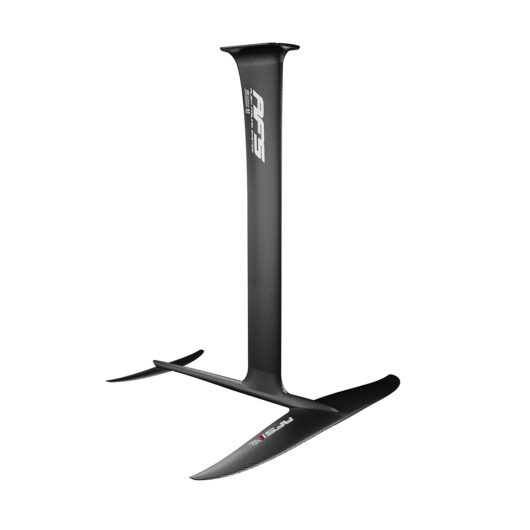
Talk to us about the stabilizer options and your favorite pairings…
The EVO range is currently offered with three stabilizers: Cruiser S, M, and L. They provide the stability and maneuverability needed for speed sensations and rail-to-rail carving. All our stabilizers (Silk, Pure, and Cruiser) are compatible with the EVO range. You can evolve them to boost your performance or specialize in certain practices. If you want an accessible combo with good low-speed tolerance and good glide, go for the EVO 1450 wing paired with the Cruiser M stabilizer. If you want a more performance-oriented combo, opt for the EVO 950 wing with the Cruiser stabilizer. You’ll gain in glide, pumping, and maneuverability.
The French flag on there is a nice touch. Talk to us about the production of these foils and how much is made in France…
We thought it was time to proudly proclaim that our foils are made in France! All our foils are full carbon and “Made In France”. This is one of the values at the core of Foil and Co’s existence – re-localizing the production of water sports equipment in France to counter the trend of low-cost production in China. From design to carbon cutting, pressing, sanding, and finishing, to shipping: everything is done in France, in our factory in Pencran, Brittany.
Beyond the desire to re-localize production in France, this choice of making Made in France products is also driven by our unwavering commitment to innovate constantly. For this, we need to be flexible, responsive, and able to test repeatedly to push the performance limits of our products. And this is exactly what producing foils in our own factory allows us to do. Ultimately, Foil and Co is the innovation laboratory for AFS foils.
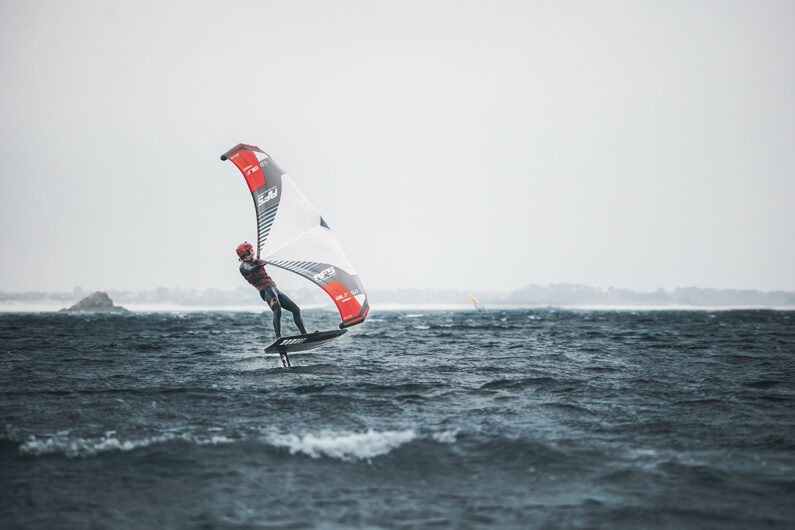
We think it’s only appropriate to drop a mention of AFS team rider Chipri Courde into this interview, who tragically passed away earlier this year. He was such a talent. Did Chipri have any influence on this new range? And what legacy does his influence leave behind at AFS HQ?
A year ago, we had the privilege of crossing paths with Chipri and his contagious smile. A radiant boy with an overflowing passion for the ocean. It was an honor for our entire team to work alongside this exceptional individual and to share unforgettable moments. His influence extends beyond the walls of AFS and will forever mark the brand's history. Whether through his kind and passionate spirit or his unique riding style, Chipri left a lasting impression on all of us.
At AFS, his influence is particularly evident in the SILK range he developed with Laurent Borgna. If you look at the tips of the EVO wings, they have much less surface area than what we used to have in our older foils, and this we learned during the development of the SILK. Chipri also had a huge influence on the new board shapes due to his riding style: the offset riding in surf foil. He was completely ahead in the development of these specific shape attributes to position the feet more towards the back of the board.
Whether on downwind or wing foil boards, his influence has spread across the AFS board ranges, and we believe his influence is also seen today in other brands' latest board developments. In any case, he leaves an indelible mark in the history of AFS and in our minds.
